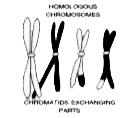The energy in the phenomenon of interference-
is conserved, gets redistributed
is equal at every point
is destroyed in regions of dark fringes
is created at the place of bright fringes.
The correct Answer is:A
To solve the question regarding the energy in the phenomenon of interference, we will analyze the concepts of constructive and destructive interference step by step.
1. Understanding Interference:
Interference occurs when two or more waves overlap and combine. This can lead to two types of interference: constructive interference and destructive interference.
2. Constructive Interference:
In constructive interference, the waves are in phase, and their amplitudes add up. This results in a higher intensity (or energy) in the regions where constructive interference occurs, often referred to as bright fringes.
3. Destructive Interference:
In destructive interference, the waves are out of phase, and their amplitudes subtract from each other. This leads to a lower intensity (or energy) in the regions of destructive interference, known as dark fringes.
4. Energy Conservation:
According to the law of conservation of energy, energy cannot be created or destroyed; it can only be transformed or redistributed. In the case of interference, the total energy remains constant, but it is distributed unevenly between the regions of constructive and destructive interference.
5. Evaluating the Options:
- Option 1: Conserved - This is correct because energy is conserved in the interference process.
- Option 2: Get distributed - This is partially correct but does not fully capture the essence of conservation.
- Option 3: Equal at every point - This is incorrect as energy varies between bright and dark fringes.
- Option 4: Destroyed in region of dark fringes - This is incorrect as energy is not destroyed; it is simply lower in those regions.
- Option 5: Created at the place of bright - This is also incorrect as energy is not created; it is redistributed.
6. Conclusion:
The only option that accurately describes the energy in the phenomenon of interference is that it is conserved. Therefore, the correct answer is that the energy is conserved.
Final Answer:
The energy in the phenomenon of interference is conserved.
---
Interference occurs when two or more waves overlap and combine. This can lead to two types of interference: constructive interference and destructive interference.
In constructive interference, the waves are in phase, and their amplitudes add up. This results in a higher intensity (or energy) in the regions where constructive interference occurs, often referred to as bright fringes.
In destructive interference, the waves are out of phase, and their amplitudes subtract from each other. This leads to a lower intensity (or energy) in the regions of destructive interference, known as dark fringes.
According to the law of conservation of energy, energy cannot be created or destroyed; it can only be transformed or redistributed. In the case of interference, the total energy remains constant, but it is distributed unevenly between the regions of constructive and destructive interference.
- Option 1: Conserved - This is correct because energy is conserved in the interference process.
- Option 2: Get distributed - This is partially correct but does not fully capture the essence of conservation.
- Option 3: Equal at every point - This is incorrect as energy varies between bright and dark fringes.
- Option 4: Destroyed in region of dark fringes - This is incorrect as energy is not destroyed; it is simply lower in those regions.
- Option 5: Created at the place of bright - This is also incorrect as energy is not created; it is redistributed.
The only option that accurately describes the energy in the phenomenon of interference is that it is conserved. Therefore, the correct answer is that the energy is conserved.
The energy in the phenomenon of interference is conserved.
Topper's Solved these Questions
- WAVE OPTICSBook:ALLENChapter:WAVE OPTICSExercise:Exercise 2 (Brain Teasures)
Explore 22 Videos
- WAVE OPTICSBook:ALLENChapter:WAVE OPTICSExercise:Exercise 3 (Miscellaneous type Questions)
Explore 27 Videos
- WAVE OPTICSBook:ALLENChapter:WAVE OPTICSExercise:Example 15
Explore 1 Video
- UNIT & DIMENSIONS, BASIC MATHS AND VECTOR Book:ALLENChapter:UNIT & DIMENSIONS, BASIC MATHS AND VECTOR Exercise:Exercise (J-A)
Explore 7 Videos
Similar Questions
Knowledge Check
Assertion : If we look clearly at the shadow cast by an opaque object, close to the region of geometrical shadow, alternate dark and bright regions can be seen.
Reason : This happens due to the phenomenon of interference.AIf both assertion and reason are true and reason is the correct explanation of assertion.BIf both assertion and reason are true but reason is not the correct explanation of assertion.CIf assertion is true but reason is false.DIf both assertion and reason are false.
State the importance of coherent sources in the phenomenon of interference. In Young's double slit expet-ment to produce interference pattern obtain the conditions for constructive and destructive interference. Hence deduce the expression for the fringe width. How does the firinge width get affected, if the entire experimental apparatus of Young's is immersed in water ?
View SolutionInterference is
View SolutionWhy cannot the phenomenon of interference be observed by lilluminating two pin holes with two sodium lamps ?
View SolutionSorption is the phenomenon :
View SolutionModulation is the phenomenon of :
View SolutionModulation is the phenomenon of :
View SolutionThe diagram given below represents a certain phenomenon occurs during meiosis :

Name of the phenomenon
Define the phenomenon
State the difference between chromosome and chromatid
View Solution

